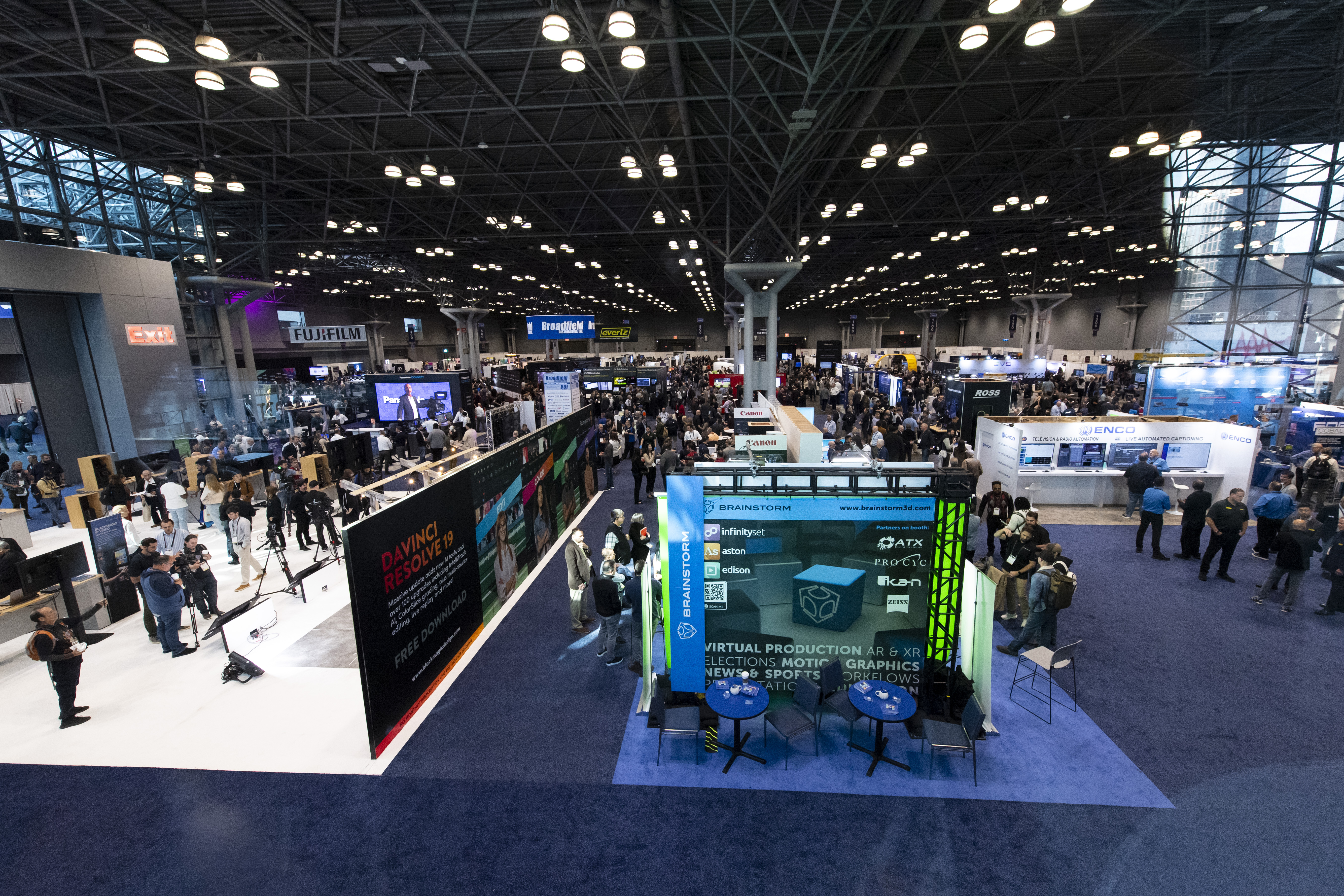Average U.S. Home Now Has Two Smart TVs
Top brands are Samsung and LG but Roku and FireTV are gaining market share as AI brings new hope for content discovery
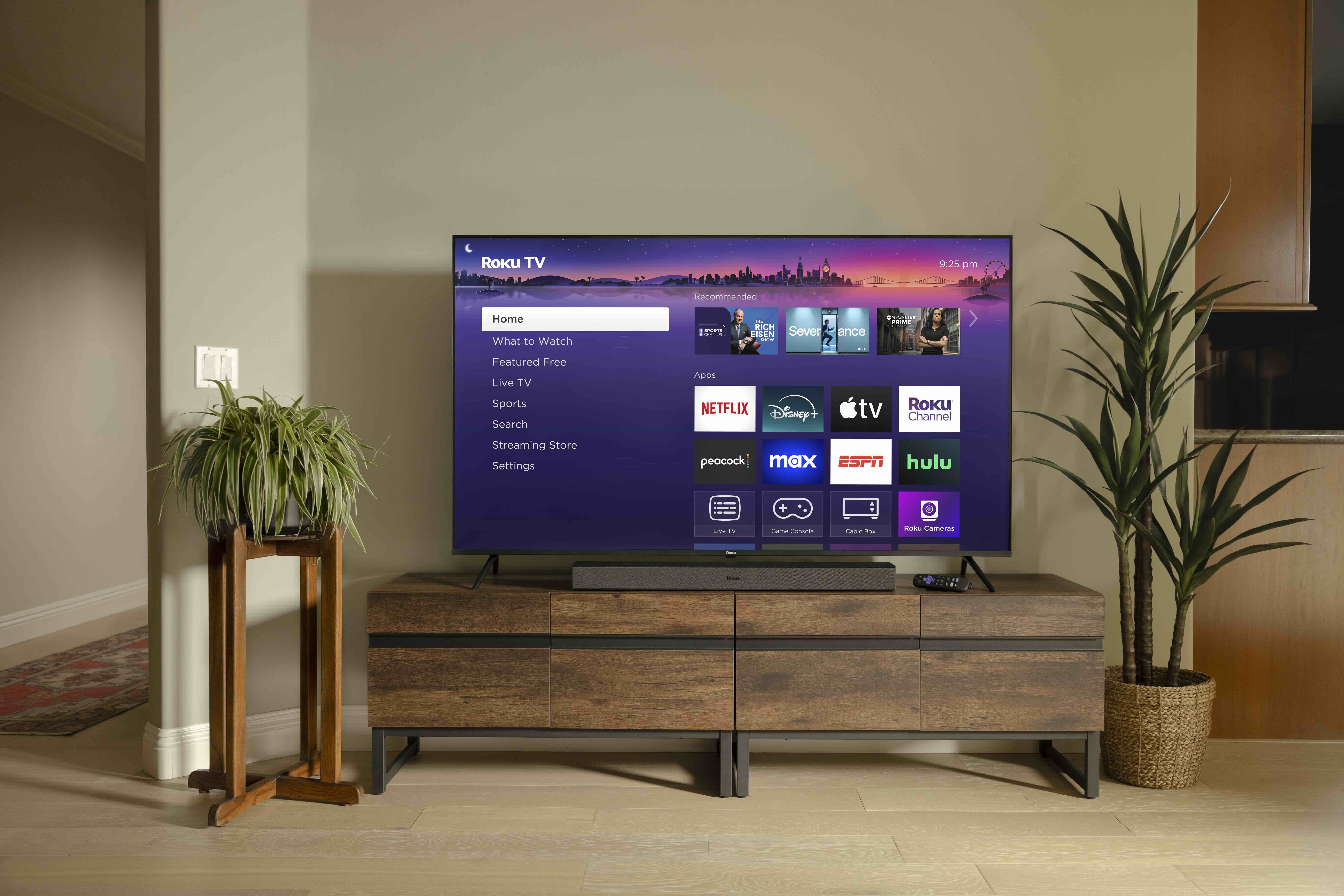
PORTSMOUTH, N.H.—New data shows that U.S. homes now own an average of two smart TVs, with Samsung and LG dominating the market but Roku and FireTV continue to gain market share, according to Hub Entertainment Researcher.
The Hub Entertainment Research’s annual "Evolution of the TV Set" study found that Samsung and LG continue to be market leaders, with Vizio and Sony a strong second tier. But among "most-used TV sets," Roku usage doubled to 8% and FireTVs increased to 5%, significant growth since 2024.
The study also highlighted the importance of new features, particularly in the area of content discovery, as a way for set-makers to gain market share.
"Without a single TV operating system dominating the market, each has the opportunity to better promote streaming services and AI-viewing enhancements to make things easier for viewers," says Jason Platt Zolov, senior consultant at Hub. "The challenge of finding a good show to watch is not just about too many services to choose from; it’s about finding a TV operating system that simplifies those choices in a way that works.”
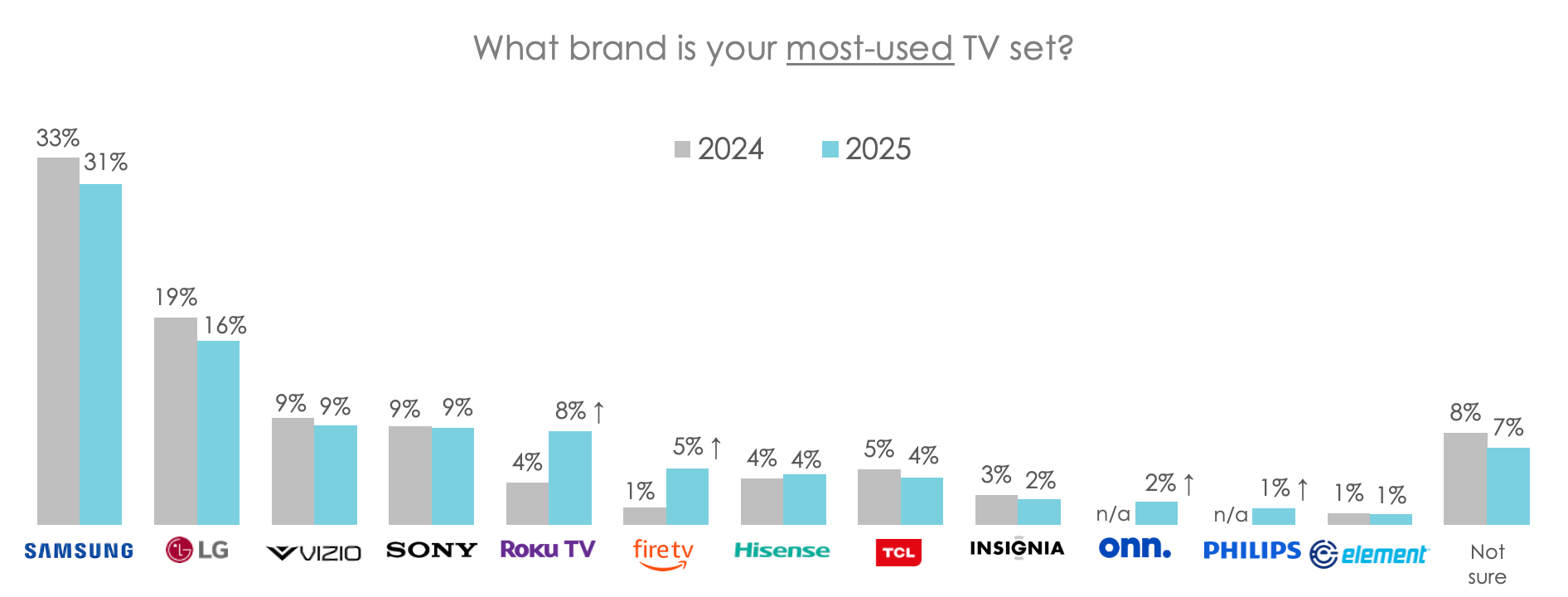
The study also found that more than ever TVs are for more than just TV viewing. More than a third of users say they keep their TVs on whether or not they are sitting in front of it. Non-TV features like music-listening (done by nearly half of users) and smart device connectivity like video calls and doorbell monitoring continue to be big growth opportunities for users.
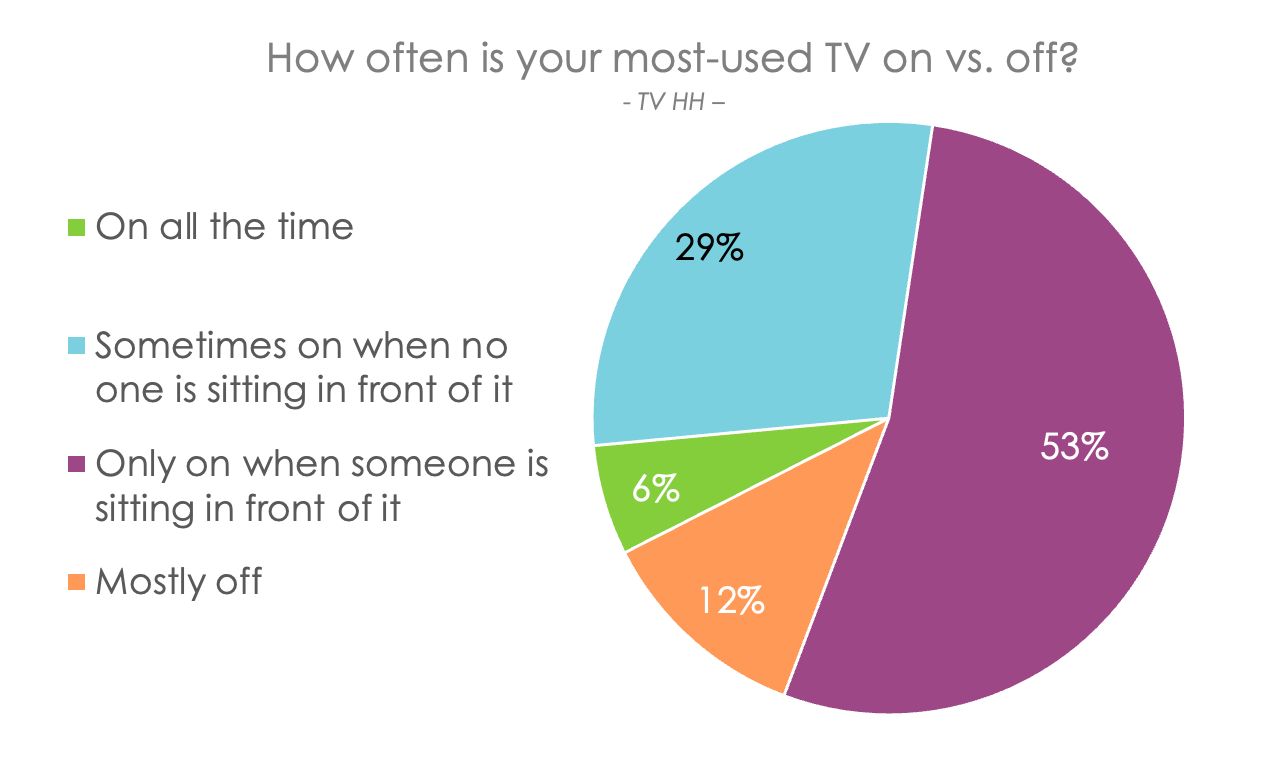
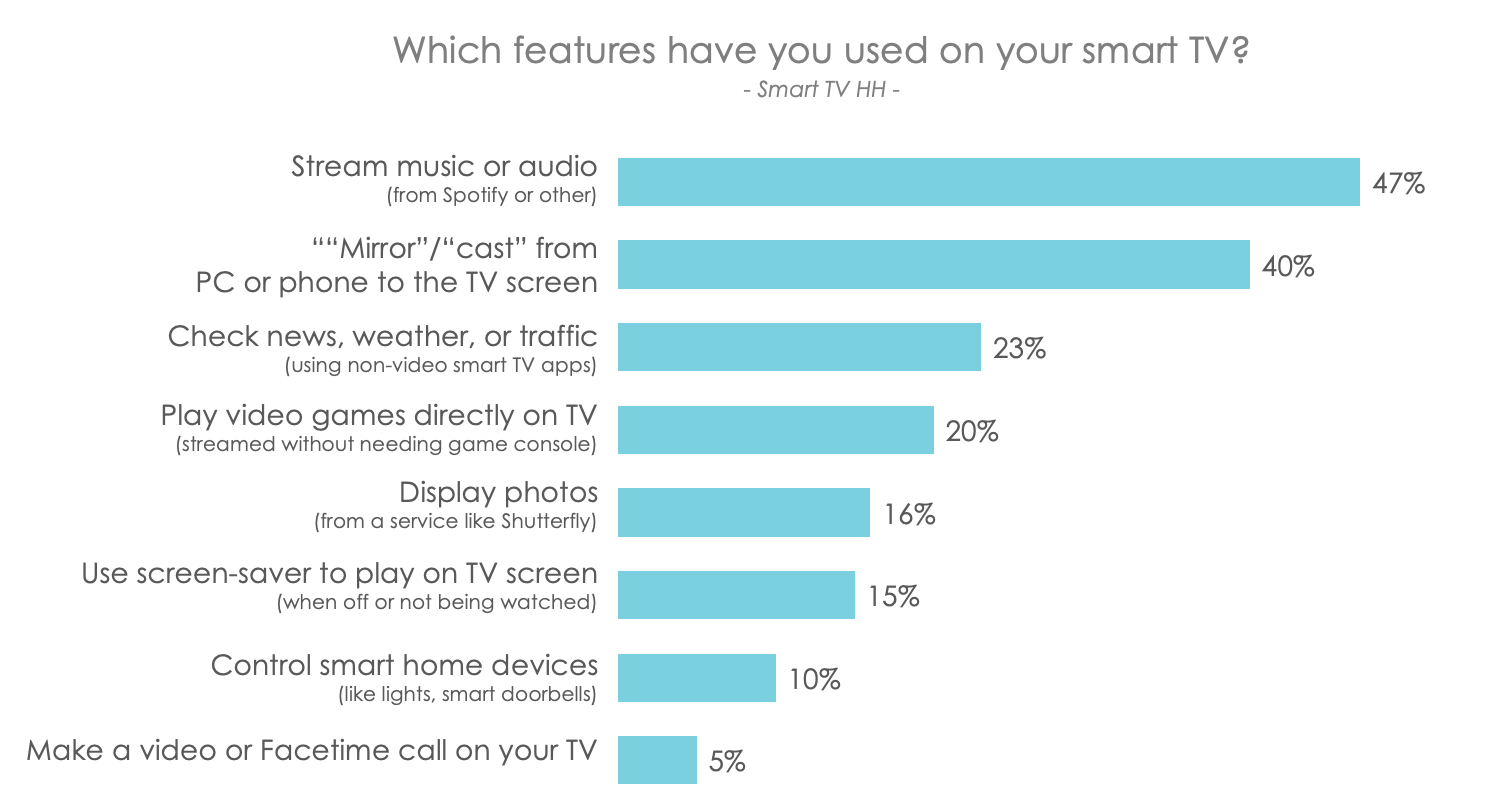
The study also highlighted the fact that app-centric TV screens are the window to how people find content.
The growing importance of the TV operating system (OS) interface is stronger than ever, with most viewers first seeing home screen apps when they turn on their TVs. Even for people who still subscribe to cable, this app-centric world is now the norm, the researchers stressed.
The professional video industry's #1 source for news, trends and product and tech information. Sign up below.
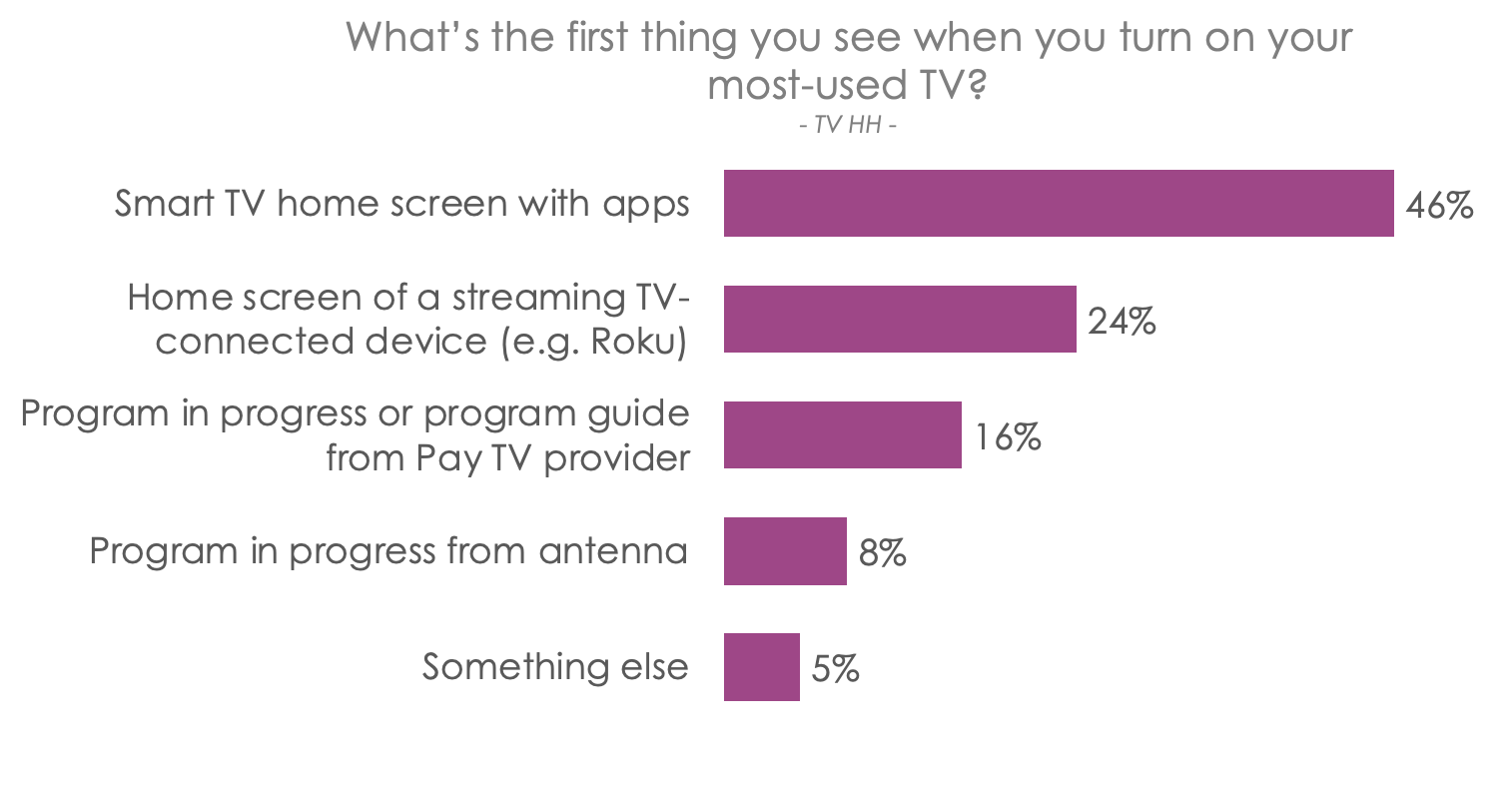
The study also focused on content discovery and AI-driven search recommendations. While universal search features to find content across services have generally fallen short for users, hampered by usability challenges, the study found that new AI driven recommendations offer hope to help solve for content discovery, as more than half of current AI users are interested in AI-powered TV enhancements to help them find and watch the shows they love.
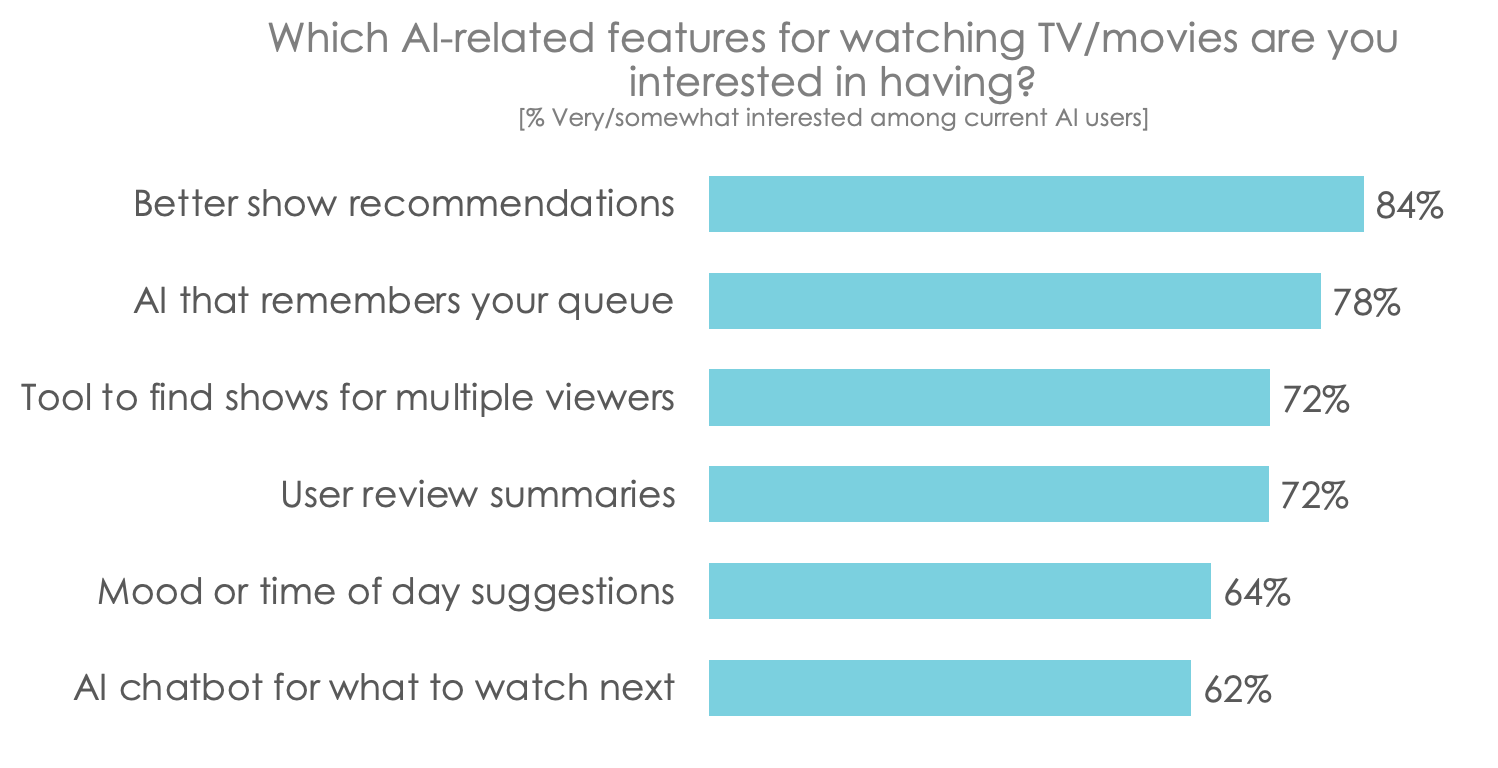
These findings are from Hub’s 2025 “Evolution of TV Set” report, based on a survey of 2,528 US consumers age 16-74. Interviews were completed in May 2025. A free excerpt of the findings is available on Hub’s website. This report is part of the “Entertainment & Tech Tracker” syndicated report series.
George Winslow is the senior content producer for TV Tech. He has written about the television, media and technology industries for nearly 30 years for such publications as Broadcasting & Cable, Multichannel News and TV Tech. Over the years, he has edited a number of magazines, including Multichannel News International and World Screen, and moderated panels at such major industry events as NAB and MIP TV. He has published two books and dozens of encyclopedia articles on such subjects as the media, New York City history and economics.

